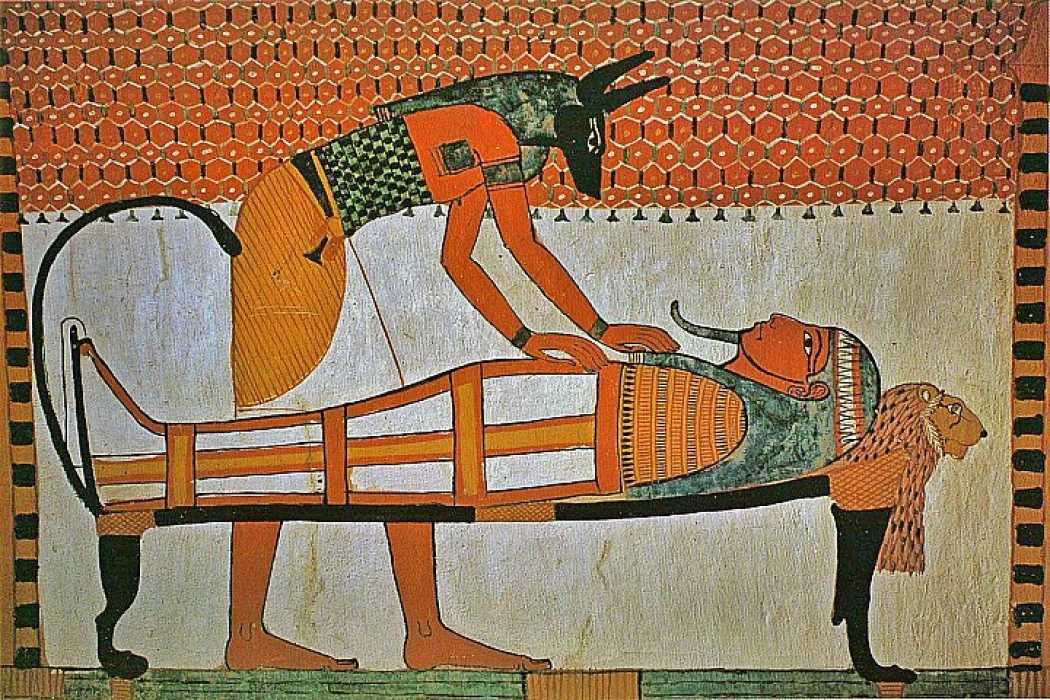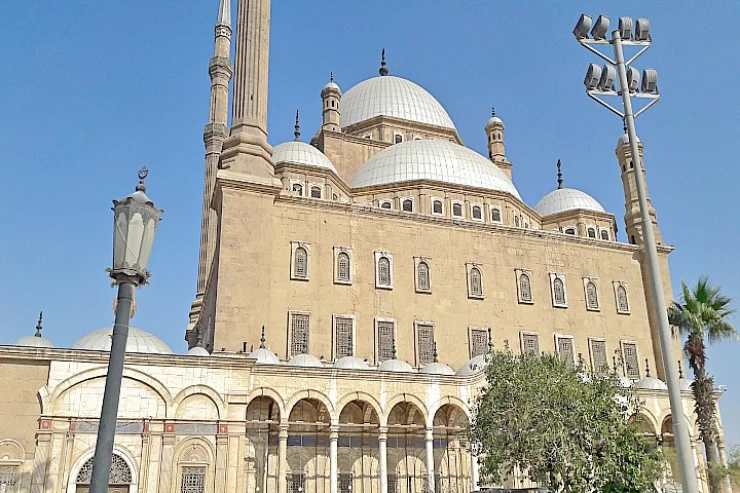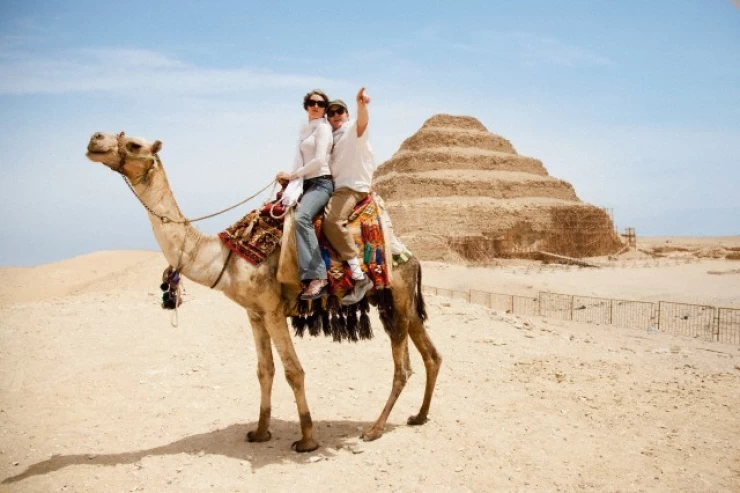
Ancient Egyptian Mummification Process
Mummification in ancient Egypt was associated with the idea of immortality, which the Egyptians believed in. The great archaeologist breasted says that no ancient and no modern people believed in the idea of life after death like the Egyptians. This was the reason for the interest of the Egyptians in the construction of the huge pyramidal tombs, which were discovered over time, and even the building of the Labyrinth, which was invented by Herodotus Palace and described in his book "history" on the basis that it soon turned out to be a funerary temple of the pyramid of Amenemhat next.
The Egyptians believed that the human body consists of three elements, the first is "khat" means the body, the second is " Ka "(consort or guardian god), and it is born with Man and the body plasma after death so that he defends it in the next life, and historians and researchers believed that " KA " is the placenta that preserves man, which is an embryo. And the next is " BA " means the soul that leaves the body at death and goes to heaven if the deceased was Pharaoh or the spirit of the lower world if he was a commoner, and kindly visits the body from time to time, and the symbol of the Egyptians to her with a bird and a human. Because the Egyptians believed that the sun was born every day in the East and died in the West, so the Western Nile was the favorite place to bury the dead.
It was necessary to provide the deceased with all the possible things he needed, such as eating, drinking, furniture, tools, and decorating the walls of the cemetery with drawings and inscriptions that contained the spirit of life in a way or by means of a technique, and it was also necessary to preserve the entire body shape and maintain it from corruption so that the soul could recognize it after burial, and embalming was necessary imposed by religious beliefs.
Mummification is considered a scientific pride of the Egyptians, who came to it completely by themselves without transferring from any other country or culture in the world. It is not known when the Egyptians discovered the art of mummification, but it is likely that they knew a primitive way to preserve the body in the era of the second dynasty and the knowledge of the archaeology of the guts of the Queen through the guards of the mother of Khufu ( the fourth dynasty), but what remains of the body may have been stolen through the protection of the tombs.
The first mummy discovered by archaeologists was from the era of the Fifth Dynasty and was stored in a museum in London, but the museum was destroyed in an air raid in 1941 during the Second World War. Soon after, many mummies were discovered around the pyramid of amnemahat Al-talt in Fayoum, and it turned out that they belonged to the common people and the mummies were preserved in an elaborate way. And in the era of the modern state, the art of mummification reached its peak and continued until the beginning of the Christian era.
Taxidermy career
Embalming was associated with the priesthood and was a ritual practiced near the temple or the burial and the place where the embalming was done, the Egyptians called it the "purified place" or " tent of the God ". The profession of the chief embalmer was a prestigious profession, but the profession of the one who examined the entrails from the body was an outcast profession in which the inviolability of the deceased's body lay.
Method of embalming
The idea of embalming was based on drying the body and then sealing its pores with insulating materials so that the moisture that caused mold would enter. The process took seventy days with many rituals. In modern times, the myth of the "Curse of the Pharaohs" has spread, and it is said that it affects those who abuse mummies or their tombs. Many of those who believed in it believe that it was because of the spells that were transmitted at the time of the embalming process or the time of burial rituals.
Embalming used to be done in ways related to the physical status of the deceased. The first method that was used to embalm Kings and Nobles was using the steps :
The body of the deceased was landing on its platform, and after two the embalmer was opening the brain from the head by means of a special machine, and after two he was picking up a knife and making an opening in the north of the abdomen of the deceased, and after two he was running and running, and those present threw bricks at him and cursed him, because they believed that the evil spirit that was the cause of death was stuck in the body of the embalmer.
The head of the embalmers was beige and emptied the belly from the entrails, but the heart was in its place, its presence was necessary for the return of life to the deceased, and it was usually stuffed with linen saturated with glue and parfaits or bitumen, and after two the side opening was sewn or it was filled with it and the nostrils, the eyes and the eyes with glue or molten wax.
The intestines were washed with palm oil and then filled with Palmer, aison and onions and smashed in special vessels, and in rare cases they returned the intestines to the abdomen again. Strangely enough, there were mummies that came together without intestines, but there was no opening in the abdomen, and until now it is not known who they were looking at.
The body is dried by burying it in natron ( sodium carbonate, which contains grills of table salt), and most of the curls were located at the time of drying, they were fixed with a thread or with a small flame or from any other metal, and if any limb broke at the time of embalming, prostheses were used and installed in place of the broken one to preserve the structure of the entire body, and mummy was discovered in Fayoum.
After lifting the body from the Natron, it was washed with a salt solution and perfumed, and any skinning was treated in it, and then the whole house was smeared with liquid glue and long strips of linen dipped in glue were damaged on it, and then it was placed in a coffin with the body of the mummified body and the burial process was completed.
The art of mummification, because it is inspired by a lot about the afterlife, is one of the more dominant and fascinating practices that ancient Egyptian culture exhibited. For the ancient Egyptians, death was not an end but a transition into another state of being. The physical form was perceived as an important instrument to be used by the spirit; therefore, its maintenance was imperative for every traveler of the afterlife. This notion led to the complex procedure of mummification, which is an art and skill that has been cultivated over generations. Mummification in ancient Egypt was not just about treating a corpse; it was also about relieving a spirit; hence, it was performed alongside prayers and other rituals showing the deep honor the people had for their dead.
According to ancient Egyptian traditions, the conception of the soul is multi-layered and includes components such as the ka, ba, and akh. The ka refers to the life associated with a person, while ba stands for the person's character, and each is the form of existence that a person possessed in the afterworld. For these aspects to come together and coexist in the other world, due to the limitations of space and time, the physical form of the body had to be preserved. This is where mummification became the most important aspect.
The Egyptians felt that if the body were not mummified, the soul or spirits could not take the shape of the mummified body. And the ka would go hungry. This explains why one shouldn’t view the act of mummification purely as a decorative task of body preservation. It was a process that was important in assuring that one was buried in the afterlife.
The Evolution of Mummification
Mummification as a practice runs deep in the history of Egypt, as it can be argued that even in his prehistoric age, the Egyptians encouraged the preservation of bodies by conducting shallow burials in the desert. The natural hot and dry sand of the desert further dried the bodies, thus preserving them almost intact. However, with the evolution of Egyptian society and as the tombs became elaborate, natural preservation could not be achieved anymore. This stimulated the quest for artificial methods of preservation of dead bodies.
During the Old Kingdom (c. 2700–2200 BCE), the Old Kingdom (c. 2575–2150 BCE) commenced with the reign of Djoser, in whose time, though the process of mummification had been improved, it was still in its early alpha stages. The exquisite Egyptian practice of mummification or full body preservation, as it is infamously known, reached its peak during the New Kingdom's reign (c. 1550-1070 B.C.). By that time, the embalmers had beautified the process to a complete ceremonial performance, which took about 70 days.
The Ancient Egyptian Mummification Process: Step by Step
Mummification was a sophisticated process that entailed the preservation of the corpse and the execution of sacred rites. The whole operation was carried out in specially designated embalming parlors, which were often found near a cemetery or a holy place.
1. The Washing of the Body
The initial phase would be the cleaning of the body, which was done for two main reasons. The body was taken to the ‘Place of Purification,’ Shebu. Palm wine, which is a type of liquor, was then used to bathe the body afterward water from the Nile would be poured over them. This bath was not only functional; it also served a deeper meaning of how the dead body was being prepared for the afterlife's voyage.
2. Removal of Internal Organs
As soon as the body underwent the process of cleansing, the embalmers would cut an incision on the left side of the body at the abdomen level and remove the internal organs. The process of extraction of the liver, lungs, stomach, and intestines was very meticulous since these organ systems decomposed very fast. Then the organs were all treated and mummified before placing them in canopic jars. These jars were protected by the four sons of Horus, each one responsible for a specific organ.
Imsety, the one with a human head, was the protector of the liver.
Hapy was the cuckoo who was tasked with the protection of the life-supporting lungs.
With the face of a jackal, Duamutef was in charge of the tissues of the evaporating stomach.
Lastly, Qebehsenuef, a deity depicted as having the head of a Zank, was responsible for safeguarding the intestines.
Broken but not lost This covers the topic of canopic jars, which is of course recognizing the heart. The Egyptians, however, did not remove the heart, as it was an essential organ of thought and emotions that they thought would help in judging one’s soul in the afterlife.
3. Desiccation with Natron
To eliminate the possibility of decomposition, meticulous drying of the corpse was necessary. This was achieved by the use of natron, an evaporite salt mineral that consists of sodium carbonate and sodium bicarbonate. The corpse was covered in natron powder, both from the outside and the inside, and was subsequently left to dry for close to forty days. Besides absorbing water, Natron also had a strong antiseptic effect, which aided in the preservation of the corpse.
4. Filling and Stuffing the Body
After the process of embalming had been finalized, the embalmers defrosted the body from the nanotron and performed a secondary wash of the corpse. Rags, wood shavings, and even dried plants and animals, among other things, were put to use to stuff the body cavities to retain the shape of the bones and to improve the overall look of the corpse. This stage ensured that the corpse was lifelike, which was very important due to the requirement for postmortem supervision of the holy corpse.
5. The Wrapping of the Body
Once the physical body had been established and completed, the final and most familiar aspect of the mummification of a body took place, which is known as the wrapping of the body. The embalmers used long strips of linen to layer wrappings around the dead body in various folds. During this process, amulets and charms were also added into the folds of the linen to ensure they would help in guarding the dead on his way. Djed pillar, which represented stability, and ankh, which represented eternal life, are some of the amulets.
Pieces of rotten cotton remained to stain the wrapping of the corpse. During this time prayers and rituals were chanted and carried out in order to keep the corpse and the ritualist as clean as possible spiritually. Introduced in the text is the Book of the Dead, which is a collection of rituals and incantations meant to assist the deceased in navigating the realm beyond. Such writings were normally found within the wrappings or placed in the burial chamber.
6. The Final Touches
The last action performed during mummification was covering the face of the dead with a functional mask. For kings and other significant personalities, these masks were created out of gold, like the famous mask of King Tut. In the case of others, they were made of painted cartonnage (linen or papyrus mixed with plaster).
The mask was not solely an artistic representation of the deceased but also served as a medium through which the ka and ba would identify the corpse. Following the placement of the mask, the embalmed corpse was positioned inside a series of coffins, each progressively ornamented. These coffins, which were quite often inserted into a sarcophagus, were positioned in a vault and encased with objects that the dead person might require in the other world—namely foods, beverages, utensils, and clothes.
















